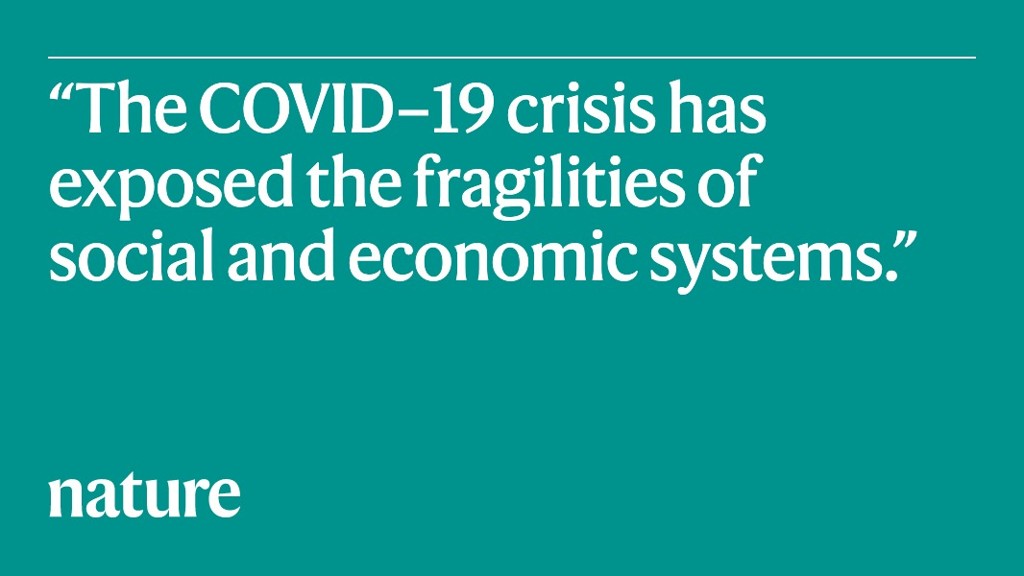Last month I lost a co-author and friend whose interdisciplinary work now seems chillingly prescient. Robert May, once chief scientific adviser to the UK government and president of the Royal Society, did ground-breaking work on disease contagion, among other things.
A decade ago, May and I published a paper in Nature using models drawn from epidemiology to understand the dynamics of the global financial crisis of 2008–09, and appropriate policy responses to it. This instigated new thinking on the modelling of economies and financial systems. It also helped to demonstrate the value of cross-disciplinary research involving economics. Neither had featured strongly before the crisis.
The work made clear that economies and financial sectors, as connected social systems, have classic robust-yet-fragile properties (A. G. Haldane and R. M. May Nature 469, 351–355; 2011). They are prone to periodic, self-generated tipping points, in which they shift quickly into a new state from which they can’t return. Avoiding these means strengthening the systems’ resilience by building up buffers to cushion stress, particularly among the largest, most connected financial firms — super-spreaders, if you will.
Those findings were the opposite of the orthodoxy pre-crisis, when super-spreader banks, and the financial system as a whole, ran with dangerously slender buffers of capital and liquidity. Encouragingly, in the decade since we published our paper, financial policy has been radically reformed and significantly larger buffers have built up.
It is just as well. The COVID-19 crisis has again exposed the fragilities of social and economic systems and how they can operate on a knife edge. This time, the source of the threat is public health rather than financial wealth, but again the risk is systemic and chronic. Public-health concerns have, rightly, taken priority in the setting of policy.
But the social-distancing measures put in place around the world to limit viral transmission have come at a significant economic and financial cost. As businesses and households have locked down, there has been a collapse in global activity and spending, unprecedented in its speed and severity. This has prompted a similarly unprecedented loosening of fiscal and monetary policies.
Public policy remains on the horns of a dilemma in many countries. It is navigating a narrow path that can seem to pit livelihoods against lives, the needs of older generations against those of younger ones, the health benefits of physical distance against the social benefits of societal cohesion. These are trade-offs the like and extent of which policymakers have never seen.
It is here that economists have an important role: we have always articulated and calibrated such trade-offs. This has given economists influence over some of the most difficult choices facing policymakers in recent decades, including how to tackle the other existential crisis — climate change.
Encouragingly, economists have quickly risen to the challenge. As one example, the Centre for Economic Policy Research (CEPR) in London is now publishing articles several times each week, gathering together economic research on the financial and social impact of COVID-19.
These insights have often come from combining modelling approaches from the natural and social sciences. For example, embedding an SIR (Susceptible, Infected, Recovered) model of disease dynamics in a general equilibrium model of people’s spending decisions allows us to capture and calibrate some of the difficult trade-offs.
Despite this rapid progress, these models are still too fledgling and crude to provide robust advice to policy-makers weighing economic and health outcomes — for example, deciding when and how best to ease social distancing. One of the most pressing analytical challenges ahead, then, is to advance these models.
After the 2008–09 financial crisis, reform focused on protecting those financial-sector activities that were most crucial to the public. These were not the high-risk, high-return activities that sowed the seeds of the crash. They were the everyday essentials of banking — the making of payments and loans to individuals and businesses. Post-crisis, these activities were ring-fenced to add resilience and useful redundancy to the financial system.
After the current crisis, we must ask questions about the resilience of our health- and social-care sectors and of the economy generally. How can we ensure that the economy can produce enough kit and people to meet the needs of health- and social-care systems? What other activities need to be ring-fenced to ensure that they are resilient to future extreme events, from viruses to cyberattacks and cyclones?
To answer these questions, we need highly granular data embedded in high-dimensional models of many interacting agents. Such agent-based models have been used extensively in the natural sciences, to study everything from ecosystems to galaxies. They have been used much less in understanding our economies.
Developing these models will not be easy. It calls for a concerted, bridge-building effort involving statisticians, physicists, epidemiologists, meteorologists, sociologists and economists. Intellectual cross-pollination of the kind that I (a policymaker) enjoyed with May (an ecologist) could, in time, help to contain the sorts of viral and economic contagion that are imposing such high costs on the world today.

